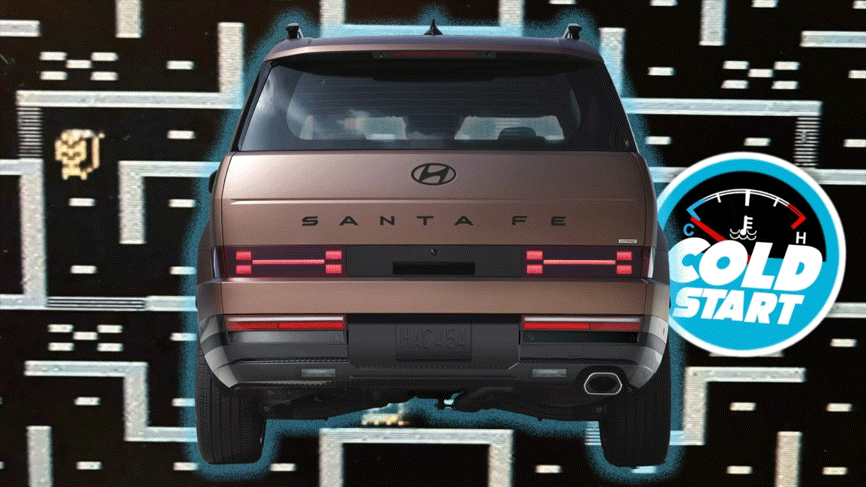In yesterday’s post, I may have overindulged in discussing how the current Ford Bronco features rear indicators that resemble curly brackets—a topic of significant journalistic value. Many of you in the comments pointed out another noteworthy taillight to examine: the broad, low taillights of the latest Hyundai Santa Fe. These taillights have not only drawn attention from car enthusiasts but also caught the eyes of those who typically aren’t focused on such details. Let’s delve into them.
More importantly, the design of the Hyundai Santa Fe’s taillights struck me as reminiscent of something very specific. Interestingly, one of our astute commenters also highlighted this connection yesterday, showcasing either the insightful perception of our readers or my own predictability—or perhaps a mix of both.
First, let’s take a closer look at these taillights:
The Santa Fe’s taillights are intriguing in various respects. Their positioning is notably low, akin to the Volkswagen Vanagon’s lights. The reasoning behind this placement is similar to that of the Vanagon: to create a rear hatch that is as wide and tall as possible for maximum storage capacity. This necessitates the hatch being the car’s full width, requiring the taillights to be located at the bottom.
Now that we understand the placement and proportions, what about their design pattern? According to Kevin Kang, the Head of Design for Hyundai North America, the taillight pattern aligns with an overarching “H” design theme that permeates the vehicle. This includes the rear and front lights, climate vents, and ambient lighting throughout the dashboard. The objective was to leave a memorable impression on those who encounter the Santa Fe, and the distinctive “H” shapes in the headlights and taillights certainly achieve that.
So, these lights are essentially designed to represent “H’s,” as suggested by commenter William, and indeed, they do resemble something more specific to me—something related to the Atari 2600 version of the game Mouse Trap. The resemblance to the game’s dog bones is uncanny, emphasizing the connection between the Santa Fe’s taillights and a nostalgic gaming element.
In essence, the similarities between the Hyundai Santa Fe’s taillights and the Atari 2600’s game graphics reflect the limitations inherent in early computing. Thanks to expensive memory costs in the 1970s, these games had to optimize their visuals in clever ways, much like how modern design can occasionally echo simpler, yet clever forms. This brings us back to the initial observation about those taillights, bridging a conversation about automotive design and retro gaming aesthetics.



